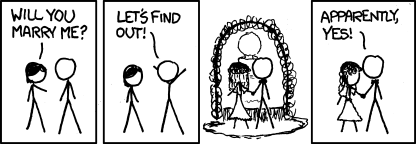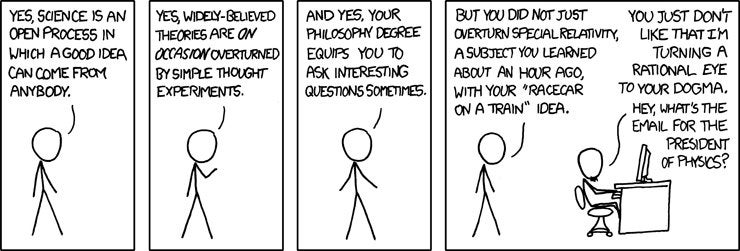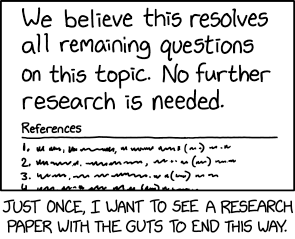
So science is about finding out how the world works. But how?
They use something called the scientific method.
In general, scientists don’t go to work and say, hey, let’s study sex today! Or hippies. Or music. It’s way more boring (to the rest of us) than that. They tend to study the world a little bit at a time.
The nuts and bolts of the scientific method are this:
1. They observe something. ‘Hey look at that!’
2. They come up with an explanation. ‘Do you suppose…’
3.. They find a way to test it. ‘Let’s check it out!’
4. If their explanation turns out to be right they can publish. ‘Scientific stardom here we come!’
So let’s be scientists for a minute. Suppose we’re at a festival and we notice that some people get more attention from the opposite sex than others. That’s our observation.
Now we have to come up with an explanation. We make a guess why (scientists call this a hypothesis). It might be right, it might be wrong – at this point it doesn’t matter. So we have a hunch that people with dreadlocks get laid more often.
How are we going to test our explanation?
Designing fair experiments is hard. Our first idea is to follow 10 people with dreadlocks back to their tents each night and listen in for sounds of activity. Then, halfway through the festival we pay them to shave their heads and see if it makes much of a difference to nighttime traffic in their tents.
We don’t think we have the kind of money that will persuade them to shave off their dreads, however. So instead we look for 10 people with dreadlocks and 10 without, half of them female, half male, and all between 20-30.
Our 20 researchers spend cold nights waiting outside the subjects’ tents and at the end of the festival we put the results together.
It turns out that in our experiment that people with dreadlocks get 15% more sex than those without. Hooray! We proved it! Let’s publish!
Not so fast.
Even if a scientific journal would accept such a terrible bit of research, it would then be reviewed by other scientists who would tear the study to shreds. Only 20 people? Were they all equally attractive? Were they single? How do you know what was happening inside the tents if you were outside? And so on.
But what if it had been a well-designed experiment and the reviewers agreed that our explanation seemed accurate?
The next step is that some other scientists somewhere else might try to repeat the experiment, perhaps with 100 people taking part this time. If they came up with similar results then our explanation that dreadlocks makes you more sexually attractive might begin to get some attention.
But then again it might not. There are a couple of million of papers published each year and most of them only get a handful of readers.
Besides, science doesn’t really ‘prove’ things. Good research and theories improve our understanding of how the world works but it’s always possible that a better explanation will come along one day.

So why do scientists go through all of this? The pay isn’t that great, there’s little chance of fame, and most of them spend their careers researching subjects so boring even their mothers don’t know what they actually do.
Think of scientific knowledge like a huge tree where every single twig, every leaf, every nut is just one experiment, one research paper written by a myriad of scientists across the world. As experiments are repeated and results are confirmed the branches grow thicker and become part of the main structure of the tree. Others in time fall down.
Now let’s pretend the scientists are squirrels. Over time the tree has grown to an enormous size and yet any squirrels can scuttle over to any branch, twig or nut that interests them.
Hear that sound of screeching?
That’s the squirrels arguing over the nuts.

Further reading:
https://www.khanacademy.org/science/high-school-biology/hs-biology-foundations/hs-biology-and-the-scientific-method/a/the-science-of-biology – a great explanation of the scientific method from the Khan Academy. Here they design a test to find out why a toaster isn’t working.

